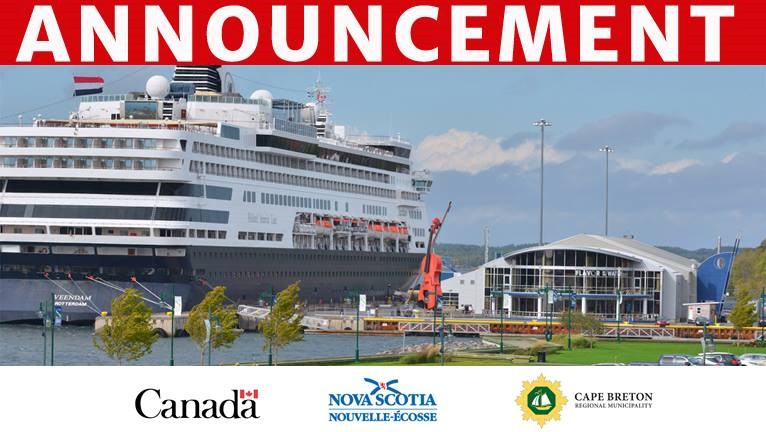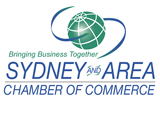On Monday, the likely expectation is that the Province of Nova Scotia and the Federal Government will commit to funding the second cruise berth in Sydney - a loosely estimated $20 Million project.
Canadian taxpayers will pay the bill. At least one third will be on the backs of taxpayers in the CBRM.
Why will it secure its funding?
My hypothesis is that it’s much more about a pressing political need for several elected representatives than a strong business case. At the CBRM council level, it’s unlikely that most council members possess the business acumen to make an assessment, one way or the other.
In fact, if you read the most recent report by consultant firm CPCS, they say it “has merit”.
Then they state the concerns including land with an asking price over $4.5 Million higher than budgeted, and described as “contaminated”. Other concerns expressed include a note that project costs have likely increased since the estimates were first made, and that more detailed engineering analysis hasn’t been completed that could reveal changes in project costs.
What they did not say is that it was a strongly supported business case.
It just “has merit” if the issues they noted are mitigated and the projections hold. They give considerable weight to the fact that projected cruise visits have increased in 2017.
Would you rather be told your ideas were (i) outstanding, (ii) very good, or just (iii) have merit? That should help put the relative confidence of their findings in clearer perspective.
Having merit means that it’s something that shouldn’t be dismissed out of hand. There is something there worthy of consideration. In the simplest sense, it’s easy to understand the suggestion. We need a place to berth more (and larger) ships.
But why is it suddenly becoming a strongly supported political case?

Liberal Premier McNeil’s favorability ratings are taking a hit with the ongoing teacher’s union dispute. Liberal MLA and Transportation Minister Geoff MacLellan is probably eager to bring a major infrastructure project home and let people forget about the millions sunk into the Yarmouth Ferry. And MP Eyking has to sink some Federal dollars into something geared towards economic development.
As to Eyking, please recall that there was an agitated response from Mayor Clarke on CBC Mainstreet radio, and an unlikely-to-be-non-approved-by-Clarke tweet-storm launched by his political appointee and communications person, Christina Lamey. With a bit of a Kellyanne Conway-esque forcefulness, she gave Eyking the horns on Twitter. Maybe that was effective after all.
As a result, we can probably expect Eyking to give in on his previous (wise) insistence that the port corp actually have a board in place before we commit federal funding. When Clarke suggests that they’ll have one in place by April, it appears that assertion will be enough to crack through the cardboard barrier with ease.
Of course, we know Mayor Clarke already promised the port board would be in place by Fall 2015. On that note, I wouldn’t put much confidence in the new estimate. Each of our three main government stakeholders will have enough talking points to survive the type of non-critical questioning just about anyone in media besides Mary Campbell at the Cape Breton Spectator are teeing up for them on this project.
The Missing Link is Visitor Experience
The mayor and his political allies at the Port of Sydney Development Corporation love to throw out BREA estimates of economic impact to justify it.
I’ve personally been pigeonholed as an opponent to the project during several of the times I’ve noted that the key issue isn’t the second berth at all.
It’s the poor visitor experience.
Let’s suppose that I must just be naive in this suggestion, and I just don’t understand this opportunity. I’m sure that’s the most convenient way to dismiss these concerns.
However, it’s impossible to dismiss such concerns when they are coming not from me as an individual. I am not the originator. Do you know who is?
I can’t take credit for discovering or bringing them to light. That was done by BREA and CPCS consultants - the consultants paid to investigate the business case.
You see, the people writing the reports for the CBRM and the Port of Sydney are continually documenting these risk factors themselves.
My question is simply why they are so gung ho on proceeding based on poorly vetted financial projections, and completely ignoring the lacking visitor experience factor that they don’t have yet have an answer to?
There are discussions about the downtown changes at the CBRM. Any of these strategies are not a part of the $20 Million project budget.
Before we talk “experience” or the lack thereof:
Do the financials really hold up to scrutiny?
Here is the part that holds up.
In general, bringing more people here creates an opportunity for more spending here. If the second berth allows for more ships to arrive, than we would have without it, then we’ll have more berthing fees, passenger fees, excursion purchases, and local spending.
The extent of that spending is, however, something that needs to be looked at more practically.
Firstly, forget about all the important sounding economic terms. The only thing that matters is the amount of additional money that arrives here: direct spending.
However that money is passed along from hand to hand after it gets here is important, but it isn’t an additional measure of economic impact. That mostly decides how much actually stays on the island, and gets into the pockets of working class families who live here.
If $1 Million more will be spent directly, local businesses are not going to spend $5 Million to earn it. They’ll have expenses less than $1 Million, and some profit taking. They’ll pay for those expenses from the new revenue, not phantom revenue. No double counting is needed here.
The good thing is that the latest CPCS report actually points this out. Their report has much more credibility than previous reports that rely on favorable cruise industry benchmarks, provided by an industry that wants to promote itself - of course.
However improved the approach of CPCS is, they still suffer from one significant flaw in their analysis. They remain highly dependent upon data provided by earlier BREA reports.
Did anyone ever survey local businesses to find out the ACTUAL impact of cruise visitors on their business?
No. The 2014 BREA report acknowledges that (see below). If they have done any follow up surveys since, it’s nowhere to be found or reflected in the CPCS report made available by the Cape Breton Spectator in January 2017.

If we are trying to justify this project based on economic return, wouldn’t it make sense to do an actual assessment of how much (or little) local businesses are benefiting?
With a university like CBU just 15 minutes away from the Civic Centre that possess the skills to cost effectively, and expediently, conduct this kind of research, why haven’t we?
We have the ability to get a real assessment, as long as we’re not afraid of what that real assessment will suggest.
If BREA is using industry averages on spending at cruise ports, I’ll share a bit of practical insight.
If we’re noted as offering a poor visitor experience, with insufficient capacity to get people to excursions, and times when businesses or attractions aren’t even open to take their money, then we’re going to be below average compared with the estimates, and probably significantly below.
It doesn’t matter if I send 100 poor people or 1,000 rich people to the Mayflower Mall. The amount of money won’t change if they arrive when the mall is closed, or none of the stores are offering anything they are interested in.
Bringing more visitors to a place that isn’t ready to serve them and capture their spending is a critical flaw. And, no, flower pots are not going to do it.
What about the money that is spent here?
Keep in mind that the bulk of the money collected or spent goes to the port corp. However, the spending formula for Cape Breton and the CBRM isn’t as clear cut as we might otherwise believe.
Halifax based tour operators deposit net profits back in Halifax, in large part. And cruise lines are said to net the lion’s share of actual excursion spending. After all, they are in the business of maximizing revenues from their passengers. They’ll do their best to extract maximum value from every port they visit. That’s just smart business. They represent their owners, investors, shareholders, and customer expectations.
Are we working backwards on strategy?
In terms of experience and revenue capture, it would appear so. Consider the stalling of the Destination Louisbourg project by the CBRM.
The CPCS report acknowledged the Fortress of Louisbourg as the number one site visited by cruise visitors. You would think that might warrant acceleration of that project, not injection of unnecessary hurdles. Instead, the town’s waterfront is falling apart, and cruise passengers on tours don’t even stop in the town on their way to and from the Fortress. The alternative would have been an exciting enhancement, in collaboration with Parks Canada, that would make the town and Fortress and even more compelling place to visit.
Back in October 2016, the Miner’s Museum, another cultural excursion for our cruise visitors, was in the media described as being in “desperate need of repairs”.
Let’s do a reality check.
We’re focusing on trying to get more cruise ships, larger cruise ships, and more cruise passengers to arrive here. And yet we have some of our top attractions falling apart, and a downtown Sydney core that leaves passengers wandering around in a challenging search for something of interest to do.
That is why we keep talking about experience.
We already get critical feedback from cruise passengers. This is noted in the BREA reports.
Without solving the serious visitor experience issues, what we may end up doing is encouraging more passengers to give sub-par evaluations of Sydney as a destination.
Having a berth available is an advantage to the cruise lines. However, they are certainly not going to risk negative impact on their marketing and passenger retention and growth by visiting ports that deliver poor experience.
The experience we deliver directly impacts their brand too. And they are always going to protect that brand, first and foremost.
When other ports provide a better experience and greater passenger satisfaction, those ports develop a competitive advantage. So we have to be careful not to bring more cruise ships here based on the promise of a berth “parking space”, and inadvertently jeopardize our relationship with these cruise lines long term.
Fuzzy financials and no answer to experience?

From a practical business mindset, that is where we are. The actual economic return isn’t as clear cut as berth proponents might have us believe. And there isn’t a clear path towards improved experience at present time. If anything, costly programs like the flower program give an indication that our municipal stakeholders don’t really understand experience or how it relates to greater revenue capture.
If the CBRM pays only 1/3rd, don’t we benefit anyway?
Paying a third of $20 Million is nice at face value. It doesn’t mitigate the challenges of experience. However, it does ensure that the province of Nova Scotia and the Federal Government pay for the berth out of the pockets of taxpayers outside of this region.
If you reevaluate the return based on only a $6.67 Million investment, the increased spending could be overstated, and we might still do ok on the project.
That is certainly true in one sense. The issue arises when you understand the very basic but very important principle of opportunity cost.
To simplify: if you choose one thing, you lose out on another.
The thing you lose out on is the opportunity cost. If you have only $50 and you spend it all on steaks, you don’t get to spend it all on beer, and vice versa.
There are lots of opportunity costs to consider related to the second berth project. If the Province and the Federal government are dropping off $6.67 Million each for this project, we’re not going to easily convince them to start writing big cheques again for our other needs.
For instance, you can all but say goodbye to any concept of a modern library with architectural design features like that of Halifax. The mayor probably gave a clear indication of this when he started talking about tacking a library onto Centre 200 because they had a large, underutilized heating system.
As the CPCS report warns us, our costs may actually overrun. The Nickerson land is already $4.5 Million greater in asking price than what we’ve budgeted. The estimates were done without all required studies in place. And the costs may have simply increased due to the passage of time from when they were first proposed. We, as the tapped out taxpayers of the CBRM, will have to foot the overages on the bill.
With increased rates of CBRM home and business owners falling into arrears on municipal taxes, and bankruptcies up 35% in 2016 compared with 2015, should we be financing such projects with such variability in the costs, and uncertainty in the true degree of benefits to expect?
If you read this far, perhaps it’s only fair to share some of the 2014 BREA report concerns taken from cruise line and passenger feedback:
- Less liked port than Halifax.
- Smaller lines reluctant to pay for berths for larger competitors.
- Not much to do in Sydney (poor score).
- Limited coaches (for passenger excursions).
- Fortress Louisbourg closing too early in season.
- More popular ports in the region.
- Charlottetown considered a better port of call.
- Sydney has less name appeal.
- Poor shore excursion offering (mixed results)
- Must be life brought to the downtown area.
- Need retail components outside of the cruise facility.
Granted, feedback indicates in the BREA report also indicates a desire for a berth (instead of tendering required) by some of the lines.
At quick glance, it seems like a no brainer. The mayor and other proponents have been able to sell it as such. When they are in favor of a project, they won’t expend much energy elaborating on its risk factors or flaws in the strength or validity of the business case.
However, the validity of the economic impact is still relevant particularly in the absence of a strong visitor experience.
On Monday, we’ll likely see the funding secured.
From there, it will just be a question of how much more the municipality (that’s us as taxpayers) will end up shelling out, and what other things we may miss out on when we use the chunk of money the province and Feds give us.
When we make our next ask, they’ll certainly remind us of the $6.67 Million they already shelled out in 2017.
My expectation is that we’re setting ourselves up for a low return on investment (if any), particularly when project costs rise over the suggested $20 Million figure. It may take years of bumbling around at the CBRM council, and potential careless expenditures, to figure out the visitor experience problem that will continue even with the second berth.
It won’t be solved by flowers, nor do I think it matters if the streets are one way or two way.
Let’s get a qualified port board in place. If we recruit actual business professionals, we will have a better chance of developing strategic plans that actually have a positive impact on visitor experience, economic activity, and greater revenue capture in all towns that are providing excursions.
NOTE: The views expressed above are my own and do not represent lokol (goCapeBreton.com). Read more






3
Log In or Sign Up to add a comment.- 1
arrow-eseek-e1 - 2 of 2 itemsFacebook Comments